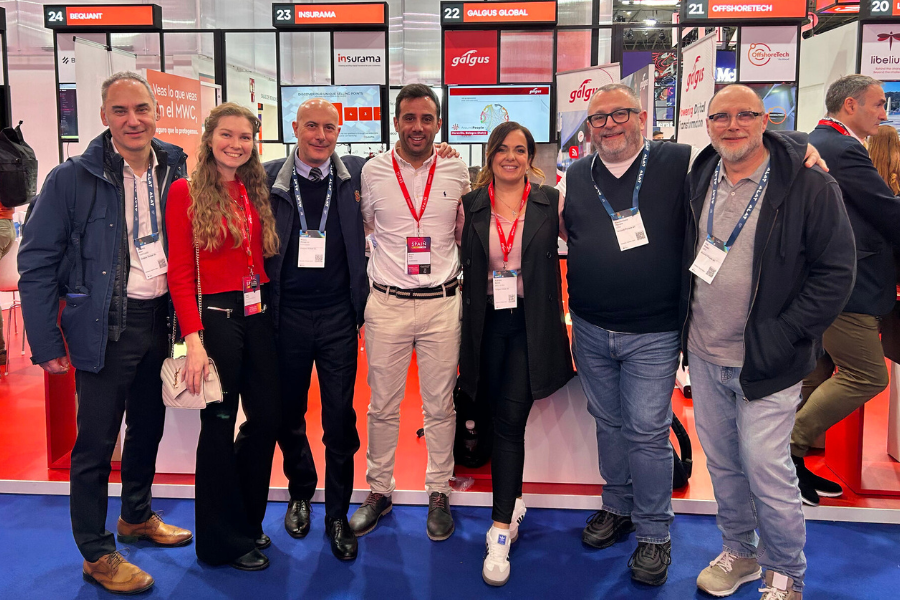We have been hearing about the metaverse for years now, but it is true that it has not yet made its way to the majority of internet users. To achieve this, it will need the technological support of utilities such as WiFi 7. In this article we tell you how the new WiFi standard will make the metaverse a regular feature of our lives.
WiFi 7, the next generation of wireless connectivity, promises to revolutionise the world of the metaverse. As technology advances and the boundaries between reality and the virtual blur, WiFi 7 stands as an essential tool for building and enabling immersive and connected experiences in the metaverse.
The metaverse is a term that refers to a shared virtual reality, where users can interact with each other in a virtual space in real time.
This new form of interaction and entertainment offers a wide range of possibilities, from online gaming to virtual meetings, online shopping and services, and more. But for these experiences to be truly immersive, robust and reliable connectivity is needed.
Let’s take a look at how the upcoming arrival of the new 802.11be standard driven by the Wi-Fi Alliance, WiFi 7, will make it possible to meet the necessary conditions for this.
WiFi network challenges to overcome in order to make the metaverse a real option
The user experience in the metaverse will depend heavily on the characteristics of the network and its limitations. Two of them in particular: bandwidth and latency.
Throughput
The metaverse will require an enormous amount of data, impossible to store locally. Therefore, massive flows of information will be generated in cloud environments, which will require extremely high transmission rates of over 10 Gbps.
Latency
The more interactive an application is, the stricter the latency requirements. This is why the metaverse must offer latencies as low as possible, below 5 ms.
If today, video conferencing applications or VoIP calls demand low latencies, the metaverse will make these demands much more stringent.
If these are not achieved, the metaverse will not feel as close to the “real life” experience as possible, and may even cause eyestrain for the user.

How WiFi 7 will make the metaverse the experience your users have come to expect
There is no doubt that WiFi 7 will pave the way for the widespread implementation of the metaverse. Let’s take a look at the reasons behind this assertion.
To begin with, WiFi 7 will have a maximum bandwidth of 320 MHz thanks to the sum of two channels of 160 MHz each, whereas WiFi 6 has a maximum bandwidth of 160 MHz (sum of two channels of 80 MHz).
Nor should we forget OFDMA (orthogonal frequency division multiple access). This means that there is no interference between devices, as each device is reserved fragments of the spectrum as they are needed.
In terms of latency reduction, we have to highlight the contribution of MLO (Multi-link Operation) technology in WiFi 7. With it, different bands can be used simultaneously and traffic can be balanced between them according to their availability and traffic needs.
In this way, it is not necessary to wait (or not so long) for a channel to become free to broadcast, thus reducing latency and increasing throughput.
All in all, WiFi 7 offers the ability to handle large amounts of data, allowing users in the metaverse to immerse themselves in completely new and exciting experiences.
Another key feature of WiFi 7 is its ability to manage multiple devices at the same time, both BYOD and IoT devices.
With the increasing number of connected devices in the metaverse, WiFi 7 allows more users to interact simultaneously, creating a more social and collaborative experience in this environment.
In addition, WiFi 7 is also presented as an essential tool for augmented and virtual reality, vital for the implementation of the metaverse.
For all these reasons, there are more than enough reasons to be confident that WiFi 7 is going to be the big push that the metaverse needs to stop being a promise. From Galgus we are going to be very attentive to this evolution and we are going to tell you everything related to it, so keep an eye on us and visit our blog!









